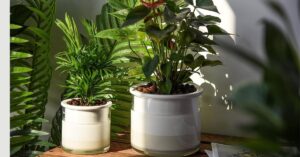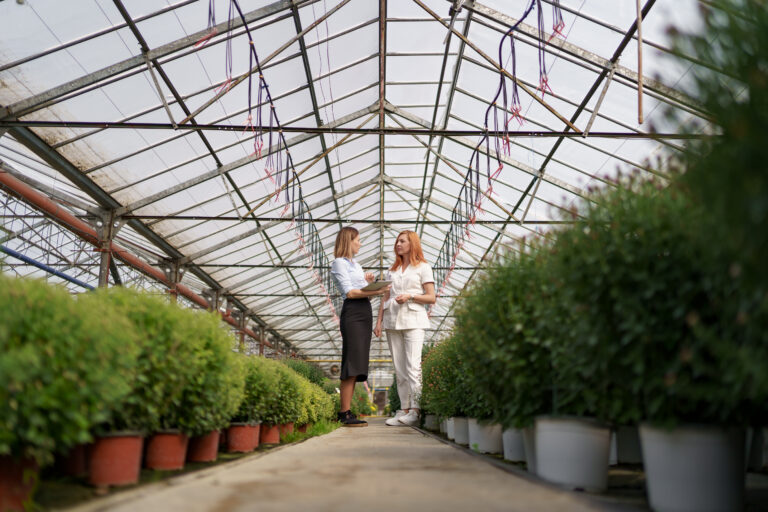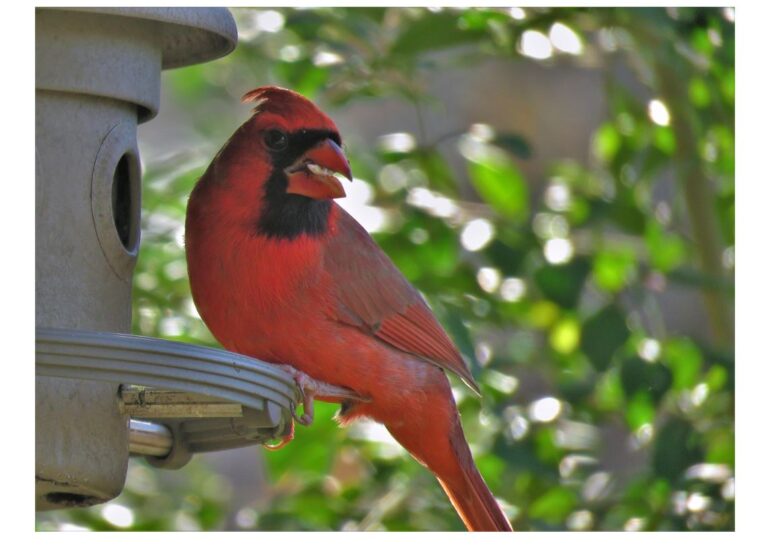The Best Planters to Use: A Comprehensive Guide for Plant Lovers
When it comes to gardening, whether indoors or outdoors, choosing the right planter can make all the difference in your plants’ health and aesthetic appeal. With a wide variety of materials, sizes, styles, and features available, it can be overwhelming to select the best planters for your needs. In this comprehensive guide, we’ll explore the best types of planters, their pros and cons, how to choose the right planter for your plants, and some top recommendations available on Amazon. Let’s dig in!
Understanding Planter Types
To find the perfect planter, it’s essential to understand the different types available and how they suit various plants and environments.
Classic Terracotta Pots
Terracotta pots are one of the most popular choices among gardeners for various reasons:
- Breathability: Terracotta is porous, allowing air and moisture to circulate, which helps prevent root rot.
- Aesthetic Appeal: They offer a rustic and natural look that blends well in gardens and homes.
- Weight: They can be heavier than plastic pots, providing stability for taller plants.
Cons: They can dry out quickly, requiring more frequent watering, and can crack in freezing temperatures.

Plastic Planters
Plastic planters come in a variety of colors and styles, making them a flexible option for many gardeners.
- Lightweight: Easy to move around, making them perfect for hanging baskets or mobile gardens.
- Durable: Many are UV-resistant, preserving their color and structural integrity over time.
- Affordable: They are often less expensive than other materials.
Cons: They may not provide adequate drainage unless designed with holes, and some may not be as aesthetically pleasing as other materials.
Ceramic Planters
Ceramic planters are similar to terracotta but often come with a glaze that provides a shiny finish.
- Variety of Designs: They come in various colors, patterns, and styles, making them perfect for decorative purposes.
- Durability: High-quality ceramic pots are sturdy and can last for years.
Cons: They can be heavy and more expensive than plastic pots, and if not properly glazed, the ceramic may absorb moisture.
Metal Planters
Metal planters, such as those made from galvanized steel or aluminum, can add a modern touch to your garden.
- Stylish and Contemporary: They offer a sleek and sophisticated look that fits well in modern gardens.
- Durable: Metal pots are generally long-lasting and resistant to weather conditions.
Cons: They can heat up quickly in the sun, which may affect root health, and they may be prone to rust if not properly treated.
Wooden Planters
Wooden planters provide a rustic charm and can be constructed to fit various sizes and shapes.
- Natural Insulation: Wood can help regulate soil temperature, keeping roots cooler in the summer and warmer in the winter.
- Eco-Friendly: If sourced sustainably, wooden planters can be a more environmentally friendly choice.
Cons: They can rot over time if not treated properly, and some types may require regular maintenance.
Self-Watering Planters
Self-watering planters are designed to help maintain consistent moisture levels, making them ideal for busy gardeners.
- Convenient: They reduce the frequency of watering by allowing plants to absorb water as needed.
- Healthy Roots: They help prevent overwatering and underwatering, promoting better root health.
Cons: They can be more expensive than traditional pots and may require additional maintenance to prevent algae growth in the reservoir.
Choosing the Right Planter for Your Plants
Selecting the right planter goes beyond aesthetics; it’s about creating the best environment for your plants to thrive. Here are some factors to consider:
1. Plant Type
Different plants have different needs. Consider the following:
- Succulents and Cacti: These need well-draining pots. Terracotta or ceramic pots with drainage holes work well.
- Tropical Plants: These often prefer moisture-retaining materials. Plastic or self-watering pots can be ideal.
- Herbs: Choose a planter that allows for good drainage and is appropriate for your space, whether indoors or outdoors.
2. Size Matters
The size of the planter will affect your plant’s growth:
- Small Plants: Use smaller pots that allow for good drainage while providing enough space for growth.
- Medium to Large Plants: Choose larger pots that offer plenty of room for root expansion and stability.
3. Drainage
Ensure your pots have adequate drainage holes to prevent root rot. If the planter doesn’t have holes, consider using a liner or adding gravel at the bottom to improve drainage.
Location
Determine where the planter will be placed:
- Indoors: Choose decorative pots that fit your interior style; consider self-watering options for convenience.
- Outdoors: Select durable materials that can withstand the weather. Consider the pot’s weight if you need to move it around.
Style and Aesthetic
Consider how the planter will fit into your overall design scheme. Choose colors and materials that complement your home or garden.
Top Planter Recommendations on Amazon
Now that you understand the different types of planters and how to choose the right one, let’s look at some top-rated options available on Amazon:
1. Classic Terracotta Pot
Product Name: Classic Terracotta Pot
Description: This timeless terracotta pot offers excellent breathability and a rustic appeal, perfect for indoor and outdoor plants alike. Available in various sizes, it features drainage holes to promote healthy root growth.
Price: $15.99
Why We Love It: The natural look of terracotta complements any plant, and it’s a favorite among gardeners for its durability and functionality.
2. Self-Watering Planter
Product Name: Plant Self-Watering Pot by Lechuza
Description: This stylish self-watering planter comes with a water reservoir that allows plants to absorb moisture as needed. It features a modern design perfect for indoor and outdoor use.
Price: $29.99
Why We Love It: Ideal for busy gardeners, this planter takes the guesswork out of watering and helps prevent overwatering.
3. Plastic Planter Set
Product Name: Bloem Terra Planter Set
Description: This set of lightweight plastic planters is perfect for outdoor use. They come in several vibrant colors and feature drainage holes for healthy plant growth.
Price: $34.99 (for a set of three)
Why We Love It: The variety of colors and sizes makes this set versatile, allowing you to mix and match for a beautiful garden display.
4. Ceramic Planter
Product Name: Ceramic Flower Pot with Drainage
Description: This beautifully designed ceramic pot features a glazed finish and drainage holes. It’s perfect for adding a touch of elegance to your indoor plants.
Price: $22.99
Why We Love It: The ceramic material and stylish design make it an attractive addition to any home décor.
5. Metal Planter
Product Name: Galvanized Metal Planter
Description: This durable galvanized metal planter is perfect for adding a modern touch to your garden. It’s rust-resistant and ideal for both indoor and outdoor use.
Price: $24.99
Why We Love It: Its contemporary design and durability make it a great choice for modern gardens.
6. Wooden Planter Box
Product Name: Garden Planter Box by Greenes Fence
Description: This wooden planter box is made from untreated cedar, offering a rustic touch to your garden. It’s perfect for growing vegetables, herbs, and flowers.
Price: $49.99
Why We Love It: The eco-friendly material is perfect for gardeners looking for sustainable options, and its size makes it great for larger plants.
7. Hanging Planter
Product Name: Macrame Hanging Planter
Description: This stylish macrame hanging planter adds a bohemian touch to your space. It’s perfect for small plants and comes with a sturdy design.
Price: $19.99
Why We Love It: The hanging design saves space and adds visual interest to your home décor.
8. Vertical Garden Planter
Product Name: Vertical Wall Planter by VertiGrün
Description: This innovative vertical planter allows you to grow herbs, flowers, or succulents in a compact space. It’s perfect for small apartments or urban gardens.
Price: $39.99
Why We Love It: The vertical design maximizes space while creating a stunning wall of greenery.
Tips for Maintaining Your Planters
1. Regular Cleaning
Keep your planters clean to prevent the buildup of algae and dirt. You can wash them with mild soap and water, rinsing thoroughly before reusing them.
2. Check Drainage
Always ensure that your planters have good drainage. If you notice water pooling at the bottom, consider drilling additional holes or elevating the pot slightly.
3. Monitor Moisture Levels
Different plants have different watering needs. Monitor the moisture level of your soil and adjust your watering schedule accordingly.
4. Seasonal Care
Take care of your outdoor planters during seasonal changes. For example, bring sensitive plants indoors during winter or provide shade for those that
What materials are most durable?
When selecting planters for your plants, durability is a key consideration to ensure they can withstand environmental conditions, resist wear and tear, and support healthy plant growth. Here’s a breakdown of the most durable materials for planters:
1. Ceramic
- Durability: High-quality ceramic pots are very durable and can last for many years. They are resistant to fading and damage from UV rays.
- Pros: They have a beautiful aesthetic and provide good insulation for roots.
- Cons: They can be heavy and may crack in freezing temperatures if not properly glazed.
2. Terracotta
- Durability: Terracotta is a traditional material that is quite durable but can be prone to chipping and cracking if dropped.
- Pros: Excellent breathability and drainage, making them great for many types of plants.
- Cons: They can dry out quickly, requiring more frequent watering.
3. Metal (Galvanized Steel or Aluminum)
- Durability: Metal planters are very durable and resistant to rust when treated properly. Galvanized steel is particularly long-lasting.
- Pros: They have a sleek, modern appearance and are often lightweight.
- Cons: They can heat up quickly in direct sunlight, which may affect soil temperature and root health.
4. Wood (Cedar or Redwood)
- Durability: Naturally rot-resistant woods like cedar and redwood can last for many years outdoors if treated properly.
- Pros: They provide excellent insulation for roots and have a rustic appeal.
- Cons: They may require regular maintenance, such as sealing or staining, to prevent decay and prolong their lifespan.
5. Plastic
- Durability: High-quality plastic planters can be very durable, especially those made from UV-resistant materials.
- Pros: Lightweight, affordable, and available in a wide variety of colors and designs. They are also resistant to breaking.
- Cons: They may not provide the same aesthetic appeal as natural materials and can become brittle over time if exposed to extreme temperatures.
6. Fiberglass
- Durability: Fiberglass planters are extremely durable and often used in commercial settings due to their longevity.
- Pros: Lightweight, resistant to UV rays and temperature changes, and available in various styles and colors.
- Cons: They can be more expensive than other materials.
7. Concrete
- Durability: Concrete planters are very durable and can withstand harsh weather conditions.
- Pros: They provide excellent insulation for plant roots and are available in various designs.
- Cons: They are heavy and can crack over time if not properly cared for.
How do costs vary among these materials?
When selecting planters, costs can vary significantly based on the material used, size, design, and brand. Here’s a breakdown of how costs typically vary among various planter materials:
1. Ceramic Planters
- Cost Range: $15 to $100 or more, depending on size and design.
- Factors Influencing Cost:
- Quality: Handcrafted or designer ceramic pots are often more expensive.
- Glazing: Specialty glazes or intricate designs can also drive up the price.
2. Terracotta Pots
- Cost Range: $5 to $50, generally affordable.
- Factors Influencing Cost:
- Size: Larger terracotta pots will be more expensive.
- Brand: Specialty brands may charge more for unique designs or high-quality clay.
3. Metal Planters (Galvanized Steel/Aluminum)
- Cost Range: $20 to $150, depending on size and style.
- Factors Influencing Cost:
- Type of Metal: Galvanized steel is often more economical than aluminum.
- Design: Decorative metal planters with intricate designs will typically cost more.
4. Wooden Planters (Cedar/Redwood)
- Cost Range: $30 to $200+ based on size and type of wood.
- Factors Influencing Cost:
- Wood Type: Cedar and redwood are generally more expensive than untreated pine.
- Construction: Pre-made planters may cost more than DIY options.
5. Plastic Planters
- Cost Range: $5 to $50, making them the most budget-friendly option.
- Factors Influencing Cost:
- Quality: UV-resistant and high-quality plastic will be more expensive.
- Size and Design: Larger or designer plastic pots can command higher prices.

6. Fiberglass Planters
- Cost Range: $30 to $300 or more.
- Factors Influencing Cost:
- Quality: High-quality fiberglass with a decorative finish will be at the higher end.
- Size: Larger fiberglass pots are more costly.

7. Concrete Planters
- Cost Range: $50 to $300+, depending on size and design complexity.
- Factors Influencing Cost:
- Size: Larger concrete planters will be more expensive.
- Design: Custom or decorative concrete pots can significantly increase the price.

Summary of Cost Comparison
MaterialCost RangeNotesCeramic$15 – $100+Quality and design influence price.Terracotta$5 – $50Generally affordable; size matters.Metal$20 – $150Type and design influence cost.Wood$30 – $200+Type of wood and construction impact price.Plastic$5 – $50Budget-friendly; quality varies.Fiberglass$30 – $300+High quality, lightweight, but pricier.Concrete$50 – $300+Durable and heavy; size and design affect cost.

Overall, plastic and terracotta pots tend to be the most budget-friendly options, while materials like fiberglass, concrete, and high-quality ceramics can be on the pricier side. When selecting a planter, consider both your budget and the specific needs of your plants. Investing in durable







